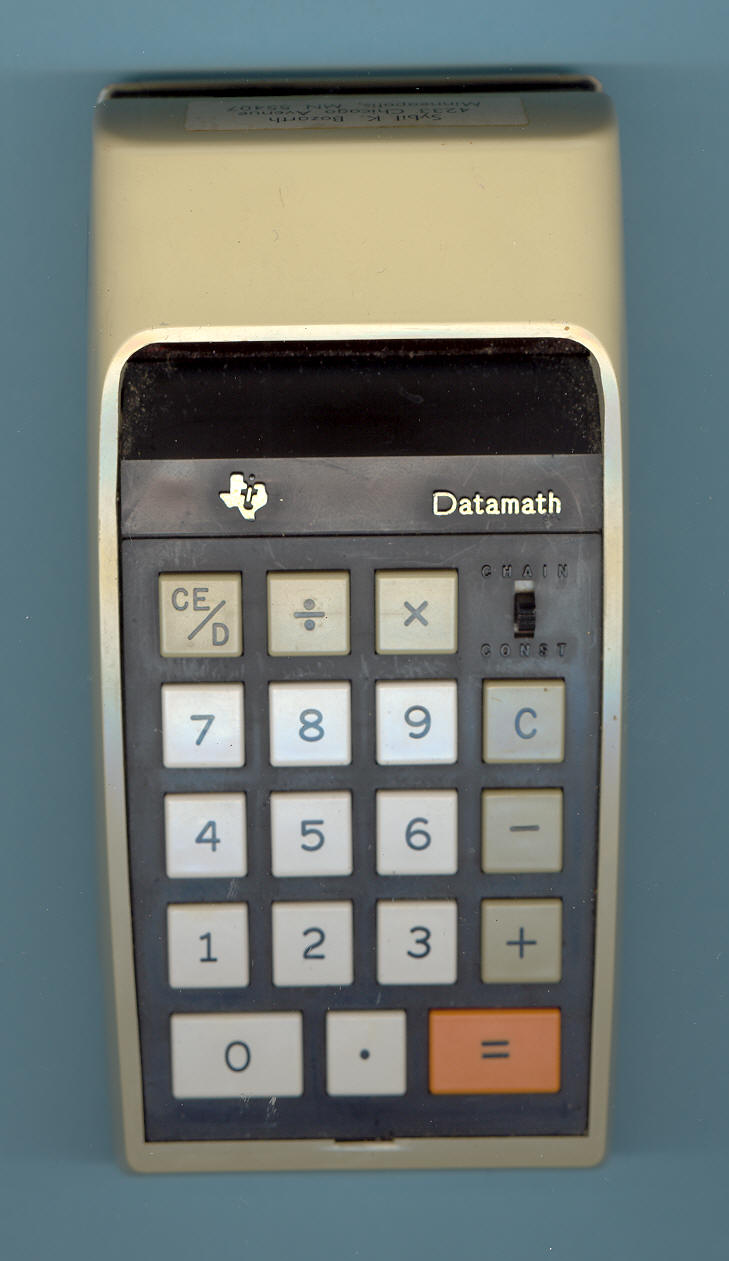
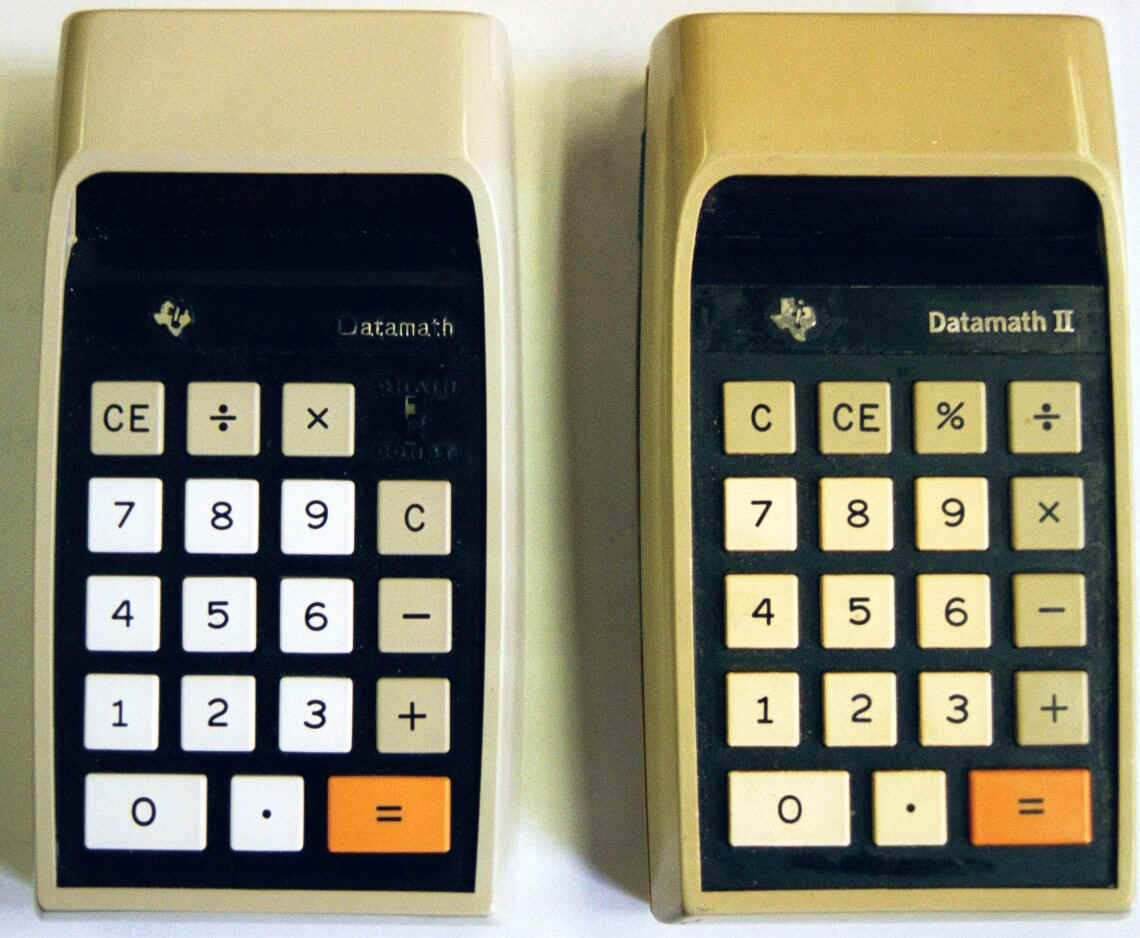
Greetings to everyone visiting from The Datamath 30th Anniversary Commemorative Edition! Visitors: Click here to go to my main calculator page--and thanks for stopping by.


The Datamath or TI-2500 was released in 01972 and was Texas Instruments' first calculator. It went through several modifications--first-generation models can be identified by the CE/D key at the upper left of the keyboard--before the Datamath II (TI-2500-II) followed a year later.
Trivia note: The Datamath was briefly seen on VH1's I Love The 70's 01970 episode--just a bit ahead of its time. Lynda Carter spoke of the gadgets of 01970, noting that "01970 saw the introduction of the floppy disk, the electronic calculator, and the computer mouse--giving geeks all over the world three more reasons to put off their first kiss.". (I was only 6 in 01970, but I can still testify that there's a certain amount of truth to that statement, at least as far as calculators are concerned...)

The Datamath was the basis for this Longines Symphonette calculator manufactured by TI.
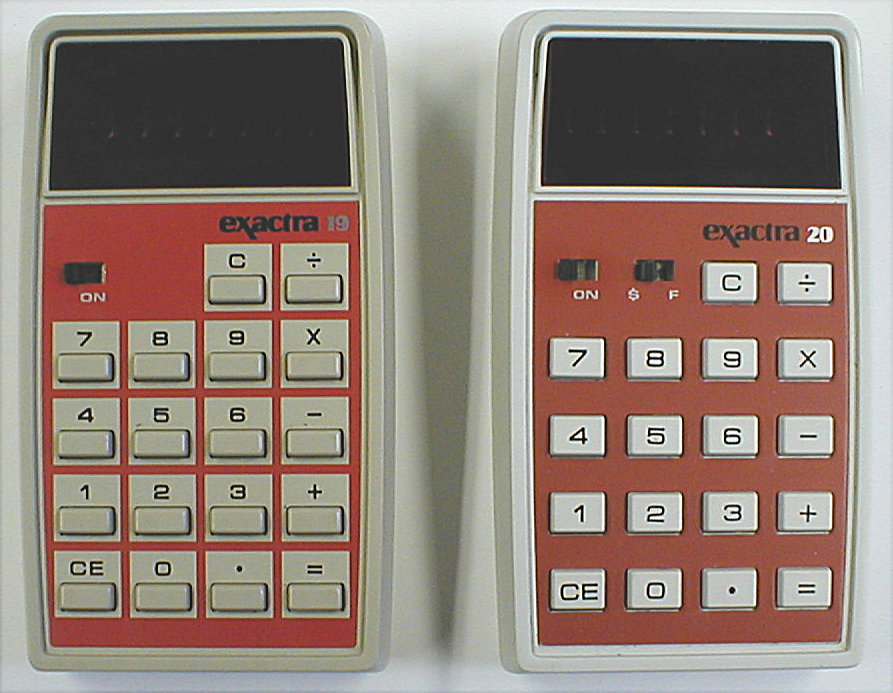

The Exactra name was used on several of the earliest Texas Instruments
calculators.
1. Exactra 19.
2. Exactra 20.
3. Exactra 23.
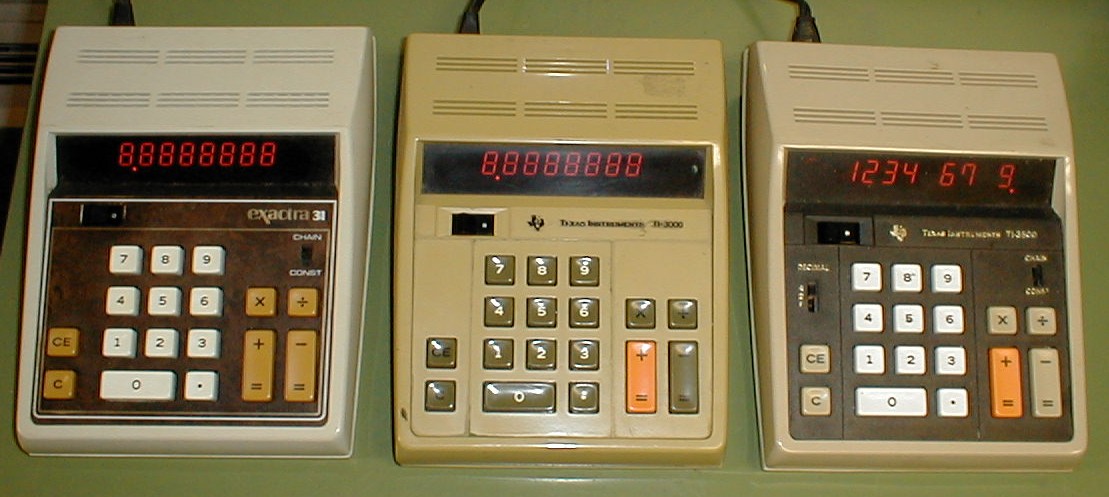
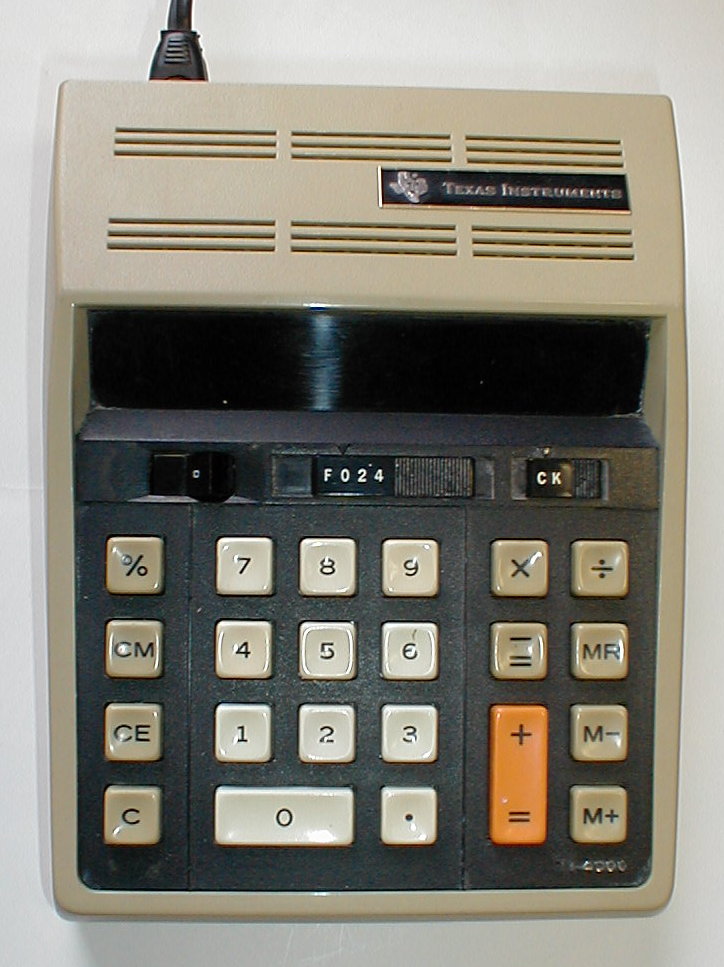
Left to right, four variations on a theme:
1. Exactra-31: A desktop member of the Exactra line, brought out in the
01970's.
2. TI-3000: A slightly earlier version of the Exactra-31.
3. TI-3500: A contemporary of the TI-3000.
4. TI-4000
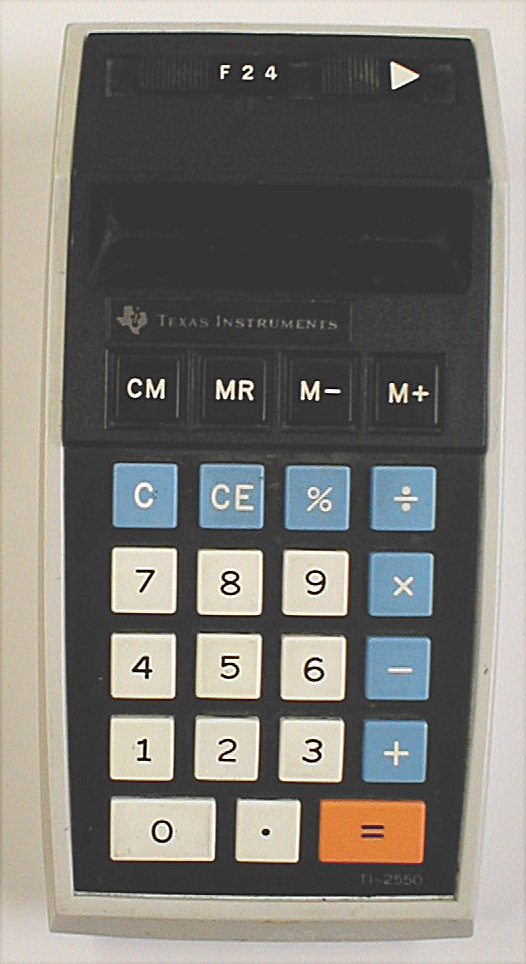
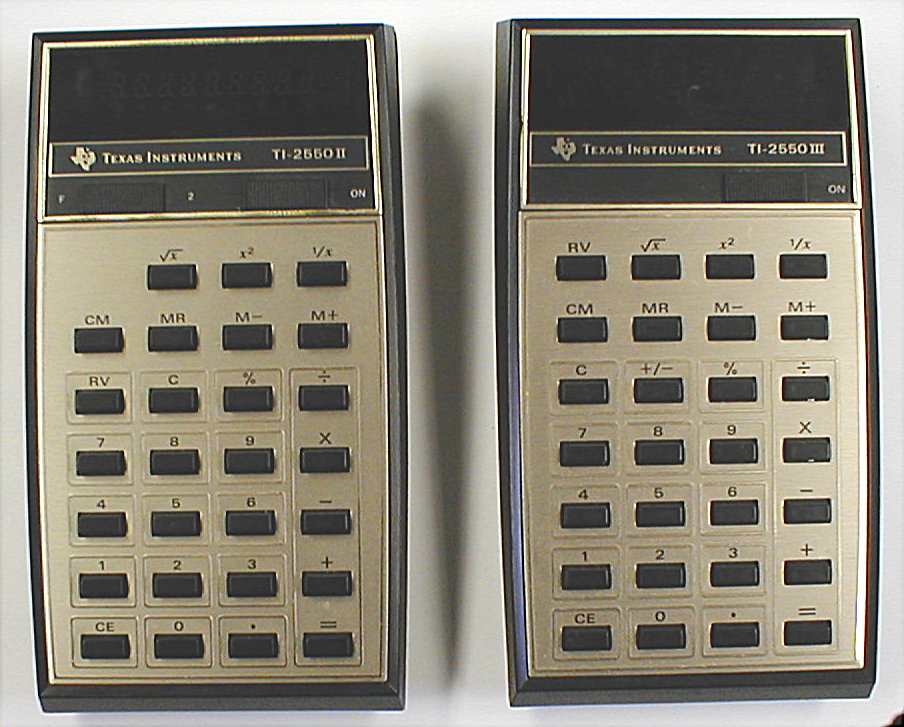
The TI-2550 line followed the Datamaths and Exactras. These calculators
introduced memory and some simple function keys.
1. TI-2550--Trivia note: This calculator appeared in a
featured role on a 02003 episode of the CBS-TV show "Yes, Dear".
2. TI-2550 II
3. TI-2500 III
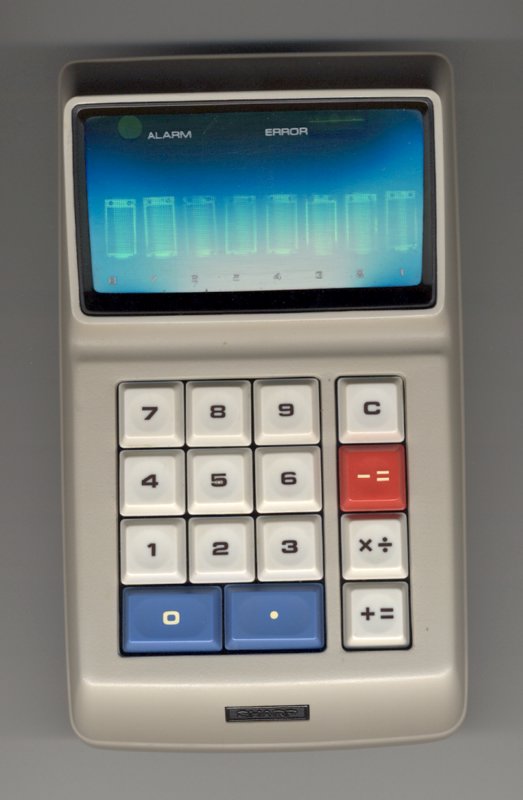
Sharp EL-8: The EL-8 was billed in 01971 as Sharp's first pocket calculator, which was stretching the point (and the pocket!) a bit. This calculator checks in at about 1½ pounds and measures 4 x 6½ x 2½ inches. Its unusual angled numbers use a tube display which was soon superseded by rectangular LED's. The EL-8 achieves its stunning economy of keys by combining multiplication and division onto one key and using the addition and subtraction keys to sort things out.
To
compute 2 × 5 on the EL-8, you would enter 2, press "×÷", enter 5, and
press "+=".
To compute 2 ÷ 5, you would enter 2, press "×÷", enter 5, and press "-=".
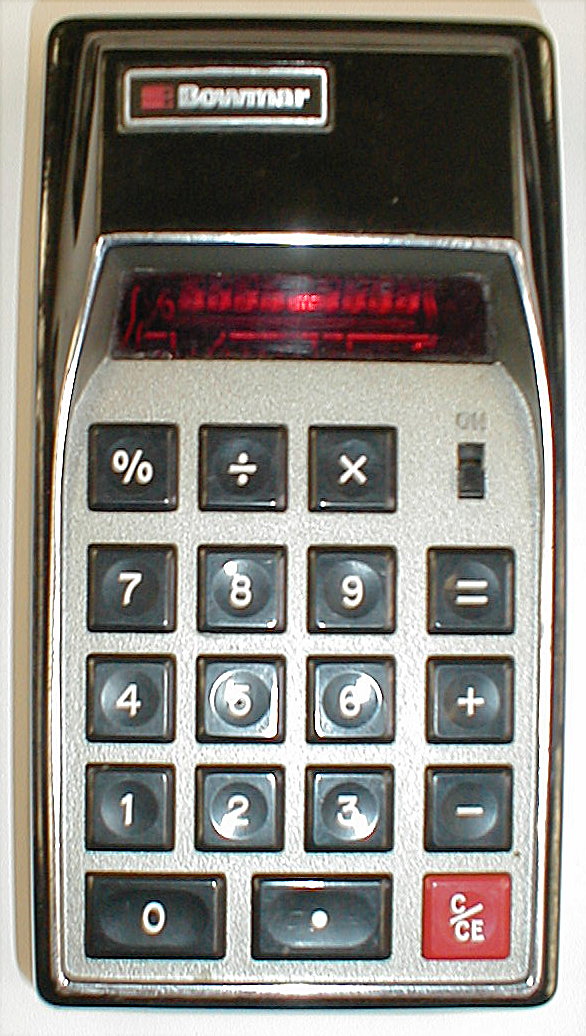
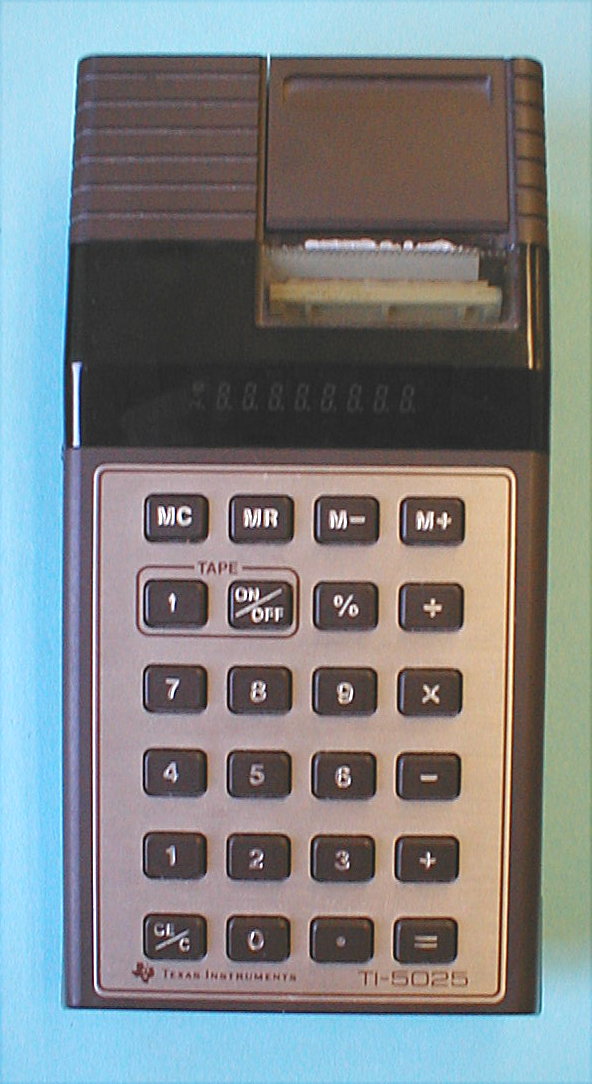
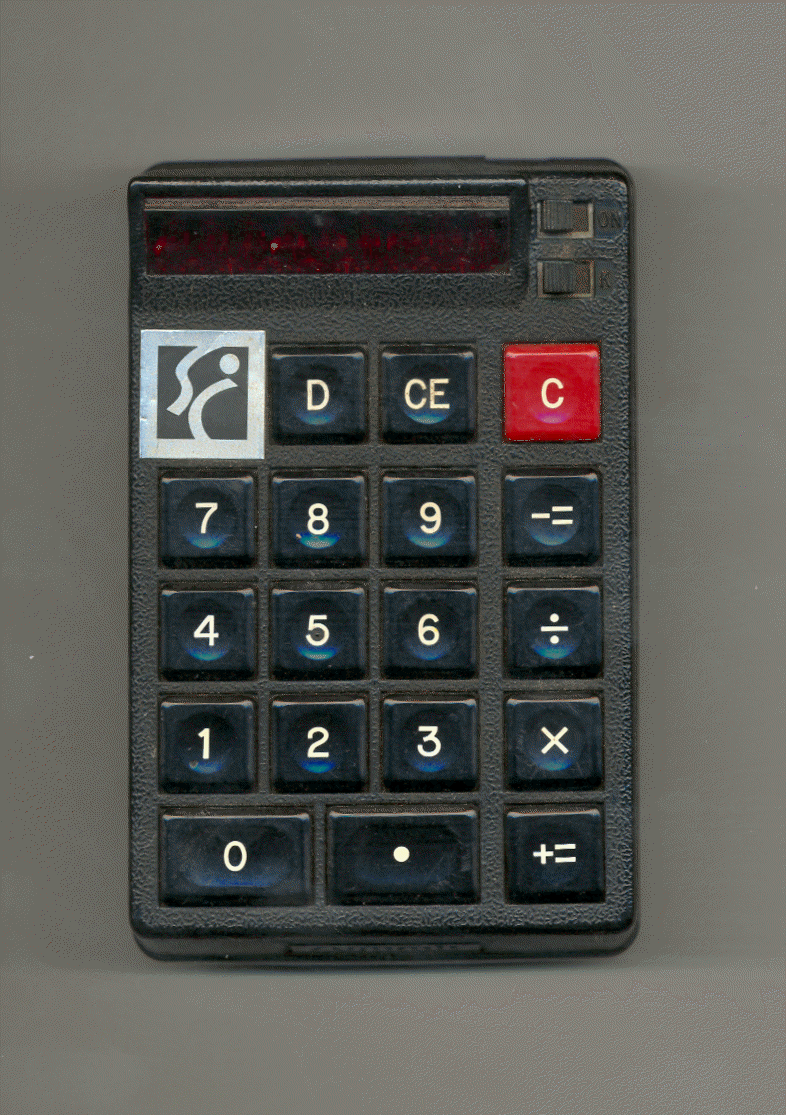
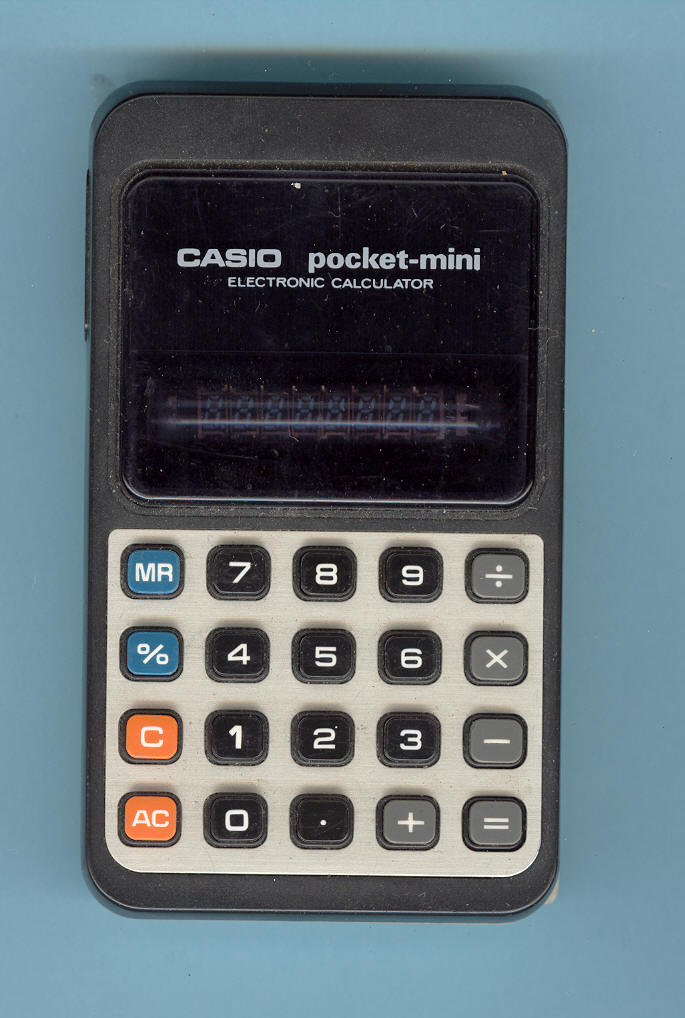
1. Bowmar MX-55.
2. TI-5025: An early "pocket" printing calculator, this one
is also quite heavy and requires one of those large strong pockets.
3. Summit K16: The Summit corporation made a number of compact
calculators in the early 01970's, many (including this one) using Texas
Instruments' Klixon keyboard.
4. Casio Pocket-Mini: Another tiny calculator, this one was an early
memory calculator.
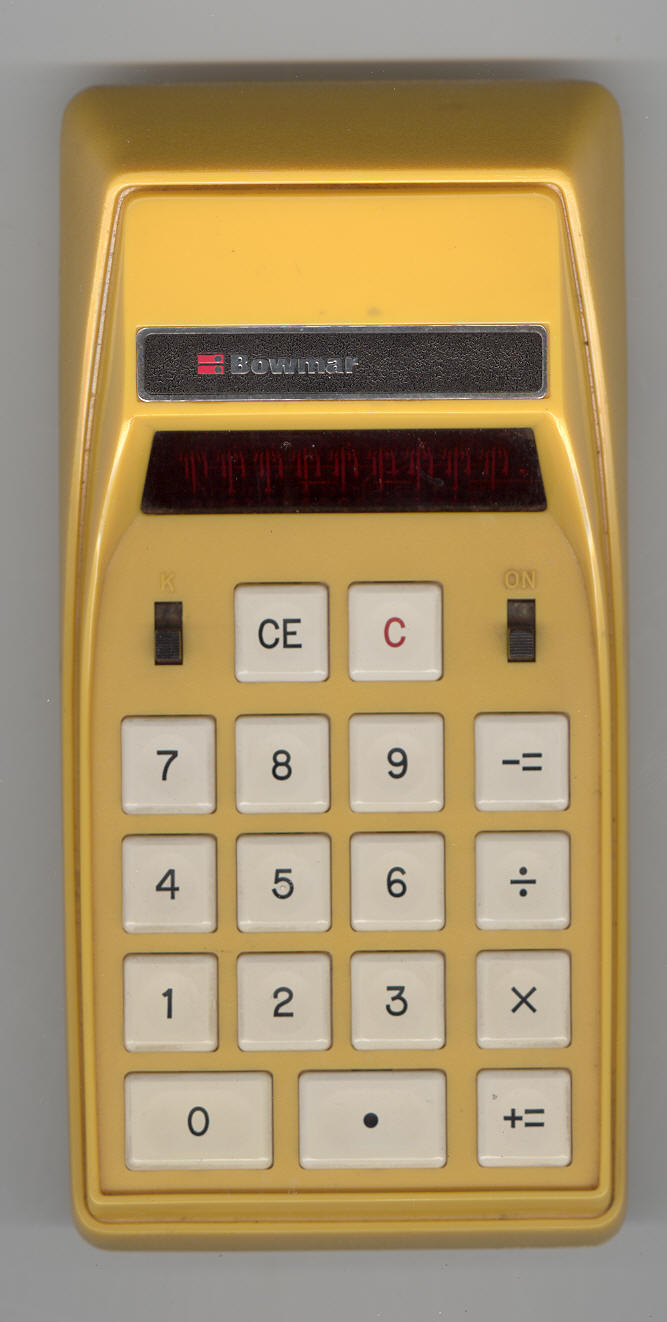
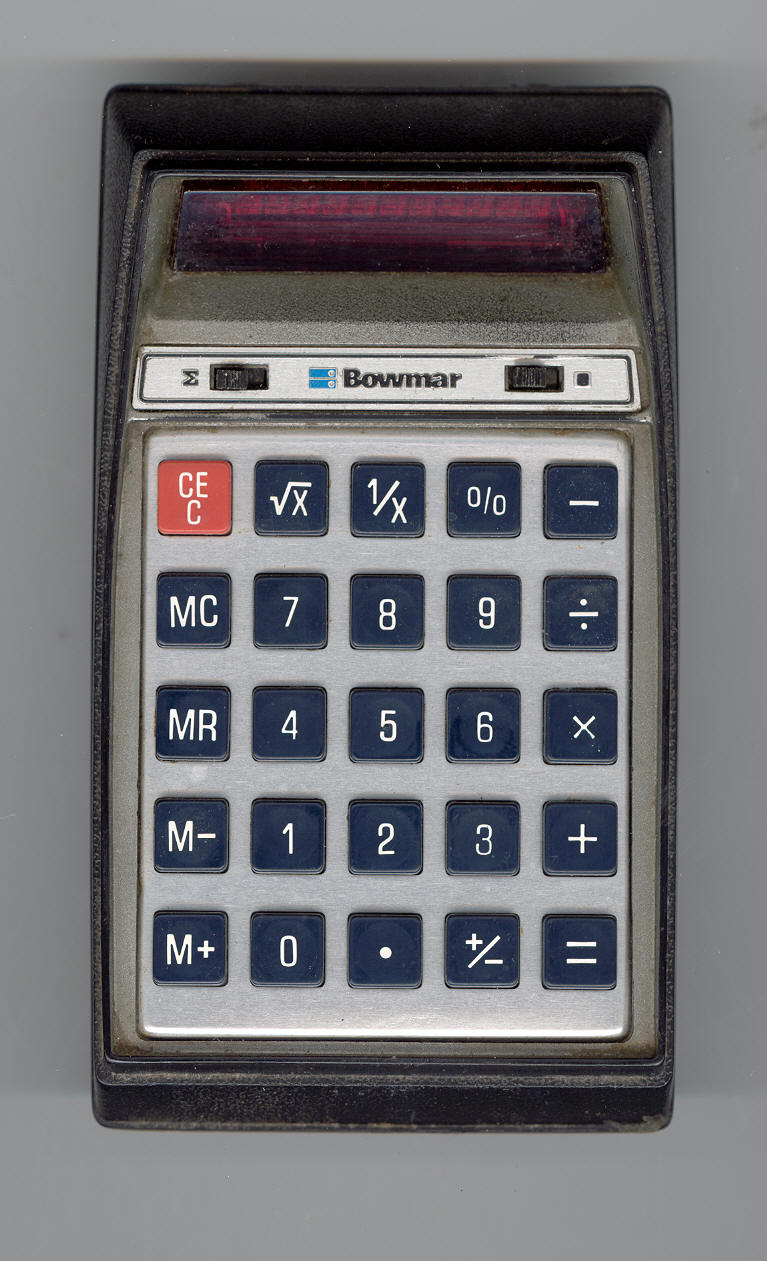
1. Bowmar 91802. Arithmetic logic is indicated by the += and -= keys.
2. Bomar MX90. Memory and some scientific functions are added as
calculators evolve.
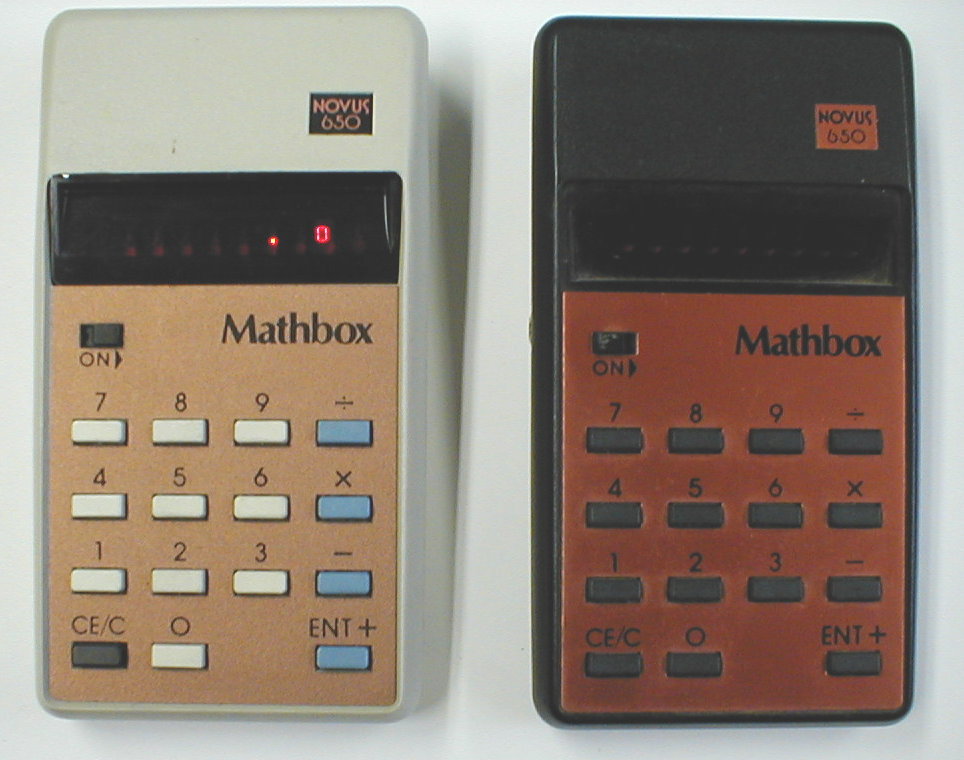
My first calculator was a Novus Mathbox from 01977 like the one on the left here. The decimal point on this model is fixed at 2 places, which enables the machine to get by with only 15 keys. This calculator uses RPN logic.
For more from Novus/National Semiconductor, click here.

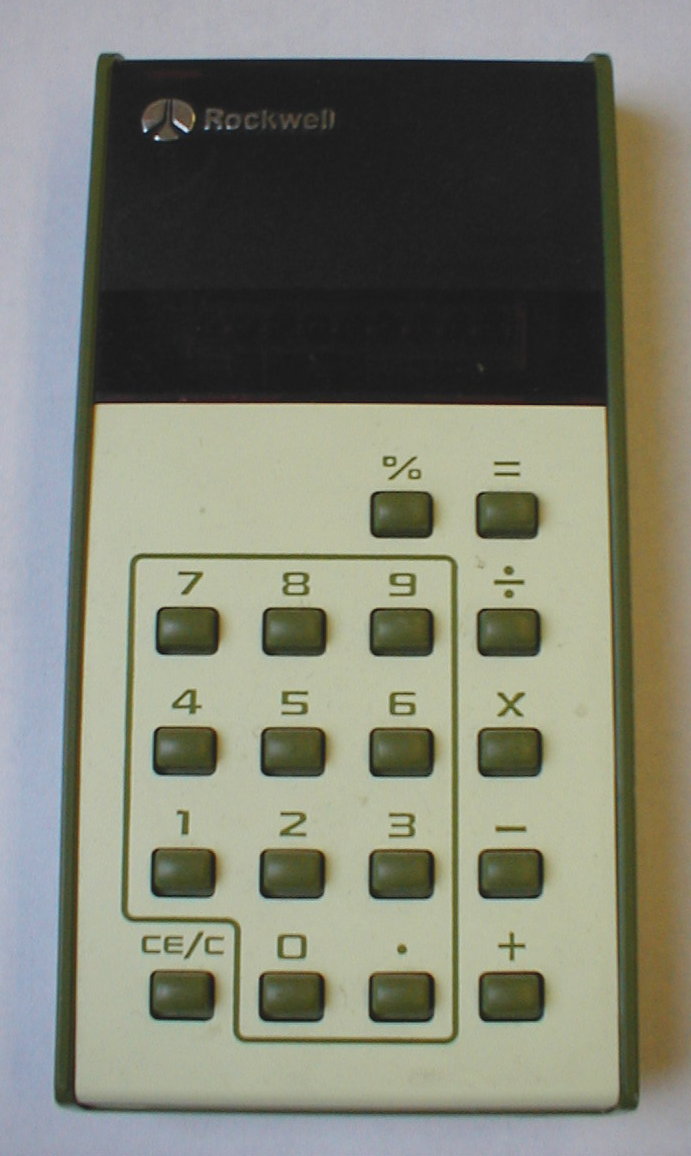
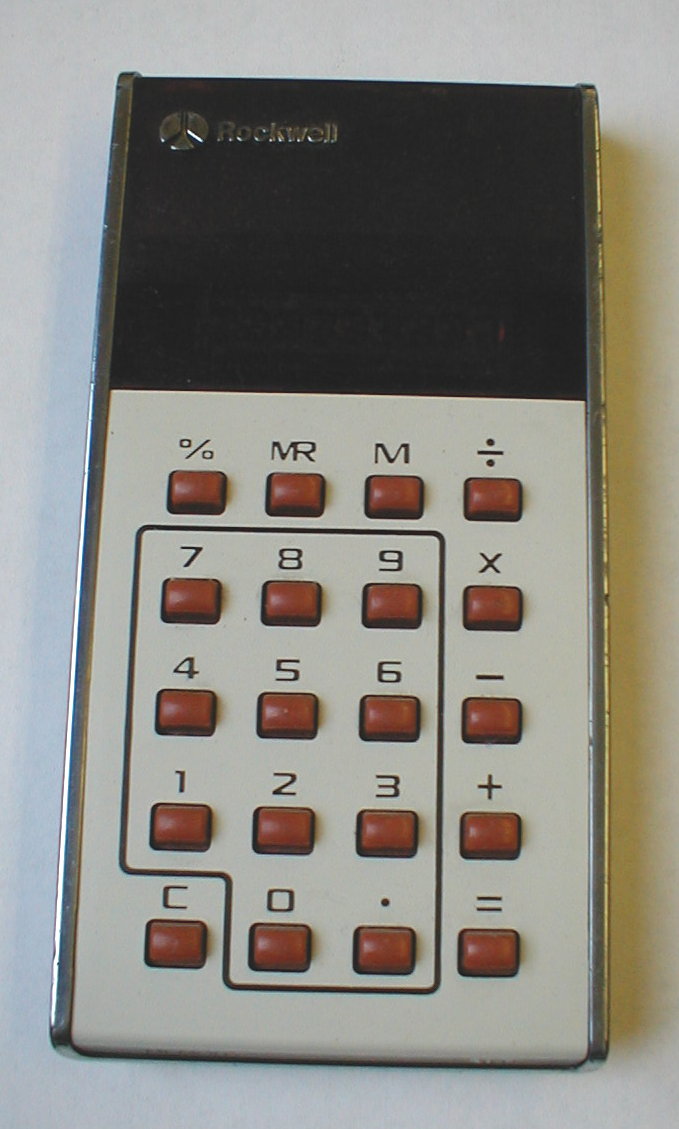
The Rockwell Corporation made some distinctive-looking LED calculators in the 01970's. From left to right, we have the 8R, 9TR, and 20R.
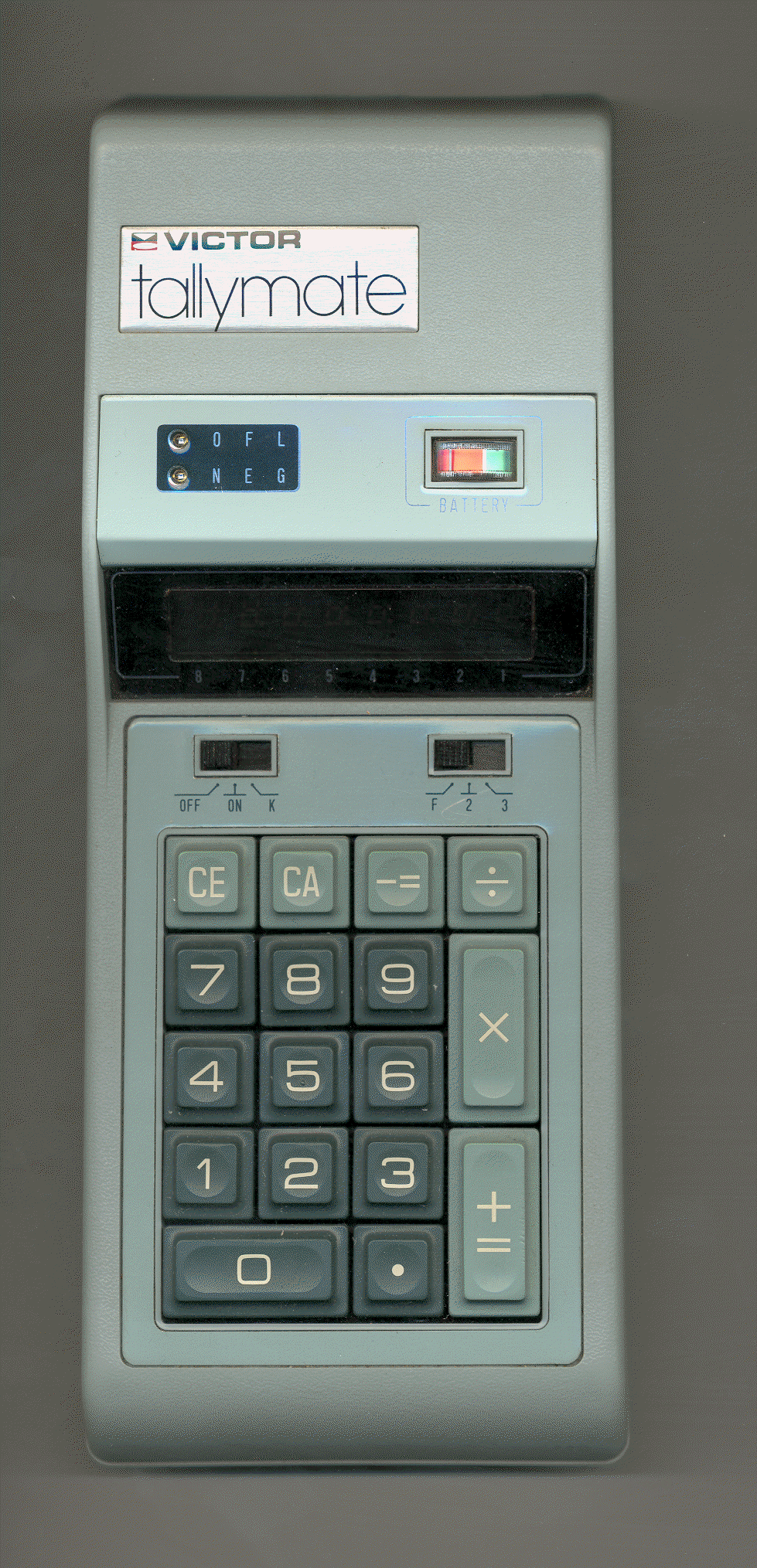
Victor Tallymate: The Tallymate was an early LED machine with a noteworthy battery strength indicator (upper right, above the screen).